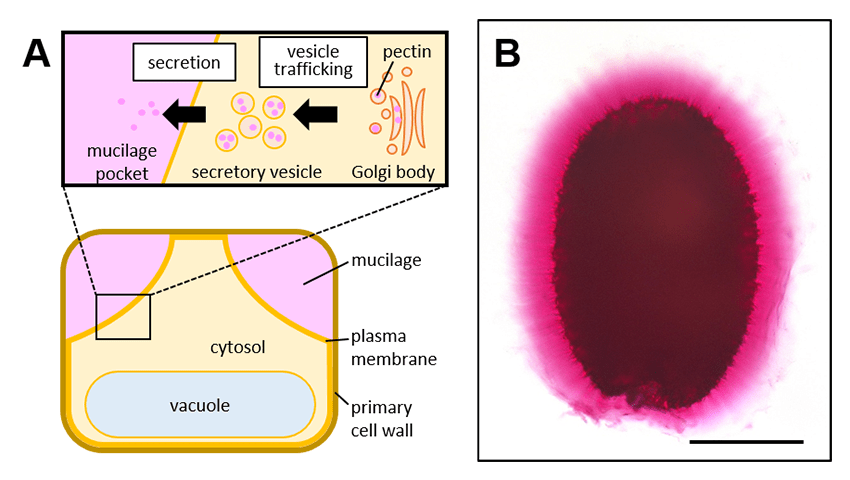2023.06.01
Seed coat mucilage for studying plant cell wall formation
Plant Metabolic Regulation・ Assistant Professor ・ Tadashi Kunieda
Cell wall is an essential structure in plant cells. Pectin is one of major components of plant cell walls. However, molecular mechanisms underlying pectin-related cell wall formation are not fully understood. Epidermal cells of Arabidopsis seed coat produce a large quantity of pectin-rich polysaccharides, termed mucilage (Figure 1). We demonstrated that transmembrane RING E3 ubiquitin ligases, FLYING SAUCER 1 (FLY1) and FLY2, regulate seed coat mucilage formation in Arabidopsis thaliana. Subcellular localization analysis revealed that FLY2 is localized to the Golgi apparatus and late endosomes. Pectin polysaccharides are synthesized in the Golgi apparatus. Therefore, our findings suggested that FLY2 would regulate cell wall formation of the mucilage via ubiquitination of Golgi-localized proteins.

Figure 1. Arabidopsis seeds are surrounded by mucilage capsule after imbibition.
(A) Schematic representation of mucilage pectin secretion in Arabidopsis seed coat epidermal cells. Pectin polysaccharide, which is one of major components of the mucilage, is synthesized at the Golgi apparatus and secreted into a space between plasma membrane and primary cell wall.
(B) Ruthenium red staining of the gelatinous mucilage capsule after seed imbibition. Scale bar = 200 μm.
Tadashi Kunieda NAIST Edge BIO, e0013. (2023).
